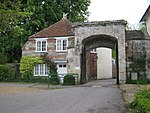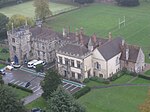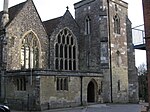Little Woodbury
Hill forts in WiltshireHistory of WiltshireScheduled monuments in WiltshireUnited Kingdom archaeology stubsWiltshire geography stubs

Little Woodbury is the name of an Iron Age archaeological site in Britford parish, near Salisbury in the English county of Wiltshire. The site, which is just north of Salisbury District Hospital, is a scheduled monument.The site lies about 1+1⁄4 miles (2.0 km) south of the centre of Salisbury and 1 mile (1.6 km) north of Odstock village, at grid reference SU149279. It was partially excavated in 1938 and 1939 by Gerhard Bersu. In excavations like Little Woodbury he introduced the revolutionary approaches in the excavation of settlements (e.g. the identification of timber post remains) developed in continental Europe during previous decades.
Excerpt from the Wikipedia article Little Woodbury (License: CC BY-SA 3.0, Authors, Images).Little Woodbury
Victoria Drive East,
Geographical coordinates (GPS) Address Nearby Places Show on map
Geographical coordinates (GPS)
| Latitude | Longitude |
|---|---|
| N 51.0503 ° | E -1.7888 ° |
Address
Salisbury District Hospital
Victoria Drive East
SP2 8QX , Britford
England, United Kingdom
Open on Google Maps






